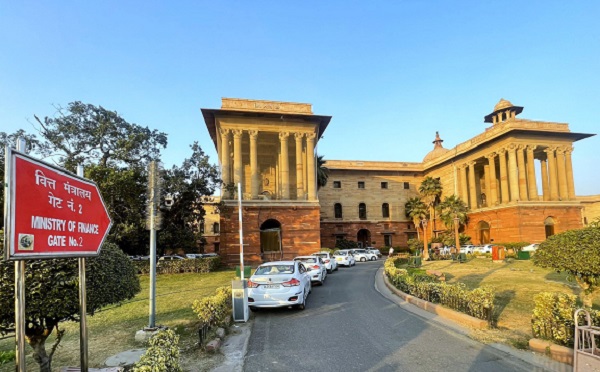.png)

By Sharmila Kantha
Sharmila Kantha, an author, is an industrial policy specialist and a consultant at the CII*. She has worked extensively on economic policy and India’s international engagement.
September 22, 2025 at 3:07 PM IST
The high fee on the coveted H-1B visas imposed overnight by the US sent ripples among India’s tech companies and prospective applicants seeking a path to better job opportunities. While the dreams of young families may have been put on hold, others believe that India will be well served by the return of tech talent and the reversal of brain drain. Both these sentiments may be overstated.
As pointed out by many analysts, India accounts for 72% of H-1B visas issued by the US Citizenship and Immigration Services. The US Congress has imposed a cap of 65,000 such visas annually, while another 20,000 are allocated under the ‘master’s cap’. About 60,000 of these go each year to Indian professionals. The total registrations for the new visas fell from about 780,000 in 2024 to about 360,000 for 2026, but the application process remains a highly competitive and uncertain lottery for young workers.
Even after H-1B visas are granted, getting them renewed every three years and waiting hopefully for green cards is a long, expensive, arduous process. According to reports, about 1.2 million Indians in the US, including family members, are waiting for green cards, and by 2030, this number is likely to touch 2.2 million. Indian families could wait up to 195 years for the backlog to be cleared. The US can thus no longer be considered a potential immigration destination.
What are the options for tech professionals other than the H-1B visa?
India is home to a massive STEM talent reservoir, producing the highest number of STEM graduates. The best of these in the technology field are picked for the H-1B programme. Others pursue opportunities in the UK, Germany, Australia. The Indian government has prioritised high-tech labour mobility, entering into migration and social security agreements with countries such as Japan, France, Germany and the UK.
The Double Contribution Convention with the UK, the Action Plan for India-Japan Human Resource Exchange, Cooperation for 50,000 skilled personnel from India to Japan over five years, and the Mobility Arrangement for Talented Early-professionals Scheme with Australia are promising alternatives. Even then, with a global pushback against migration, local policies may change at any time, as seen in the H-1B visa instance, and a degree of caution is warranted.
However, exporting high-tech talent to other countries does not yield significant benefits for the country’s economy, apart from whatever remittances they may send back home. Most professionals who take up jobs overseas remain in those countries, with little return to India in terms of dissemination of new skills, innovation or entrepreneurship.
At home, while the reversal of ‘brain drain’ is being widely welcomed, there is much to be done for the country to optimally leverage its skill resources to drive domestic innovation and R&D. India’s R&D spending as a ratio of GDP stands at a lowly 0.6–0.7%. Businesses are largely averse to undertaking in-house R&D and prefer to import technologies, often outdated, rather than enter the difficult field of creating new knowledge for commercialisation. R&D by businesses accounts for less than half of national R&D spending. Creating a viable R&D ecosystem through better incentives for private sector innovation in a tech-driven world will be central to improving employment prospects for India’s STEM graduates.
India’s tech graduates, while a large cohort, are also inadequately equipped for high-tech jobs in emerging sectors. The case of engineering graduates being not considered employable is well documented. Deepening capabilities of India’s tech professionals is imperative for their employability. For example, India is expected to face a gap of over 1 million in artificial intelligence and other advanced technologies. Skills in sectors such as electronics, robotics, automation, advanced manufacturing need to be upgraded. Gaps between industry requirements and available skills need to be addressed through careful skill mapping in alignment with identified advanced tech sectors.
It is likely that US tech companies dependent on the H-1B visa programme will attempt to get the fee hike reversed. They may also seek to set up more remote offices or global capability centres in India. Under the present circumstances, it is best for India to diversify its reliance on the US market on the one hand, and on the other find better ways to deploy its large pool of technology professionals at home through targeted skill development and policies to promote engagement in cutting-edge technologies.
*Views are personal.




